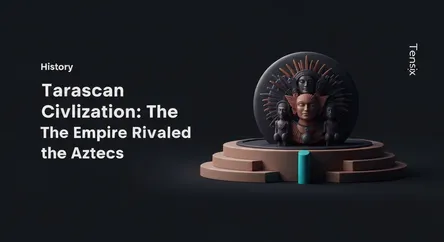History
Tarascan Civilization: The Empire That Rivaled the Aztecs

Discover the Tarascan civilization, the powerful Mesoamerican empire in western Mexico known for its metalwork and for successfully resisting Aztec conquest.
What is it?
The Tarascan civilization, whose people call themselves the Purépecha, was a major Mesoamerican empire that flourished from approximately 1300 to 1530 CE. Centered in the modern-day Mexican state of Michoacán, its capital was the city of Tzintzúntzan, located on the shores of Lake Pátzcuaro. The Tarascan state was the second-largest empire in the region at the time of the Spanish arrival, controlling over 75,000 square kilometers. They were distinct from many of their neighbors; their Purépecha language is a linguistic isolate, and they were among the few Mesoamerican cultures to develop advanced metallurgy, using copper, silver, and gold for tools, weapons, and ornamentation.
Why is it trending?
Interest in the Tarascan civilization is growing as it offers a crucial counter-narrative to the often Aztec-dominated view of Mesoamerican history. They were one of the few civilizations to successfully resist conquest by the mighty Aztec Empire, largely due to their superior metal weaponry and fortified borders. Recent archaeological discoveries, including the 2012 LiDAR mapping of a massive, previously unknown city at Angamuco, have shed new light on the scale and complexity of their society. Furthermore, there is a vibrant cultural revival among the modern Purépecha people, who are actively preserving their unique language, traditions, and identity, bringing greater attention to their rich heritage.
How does it affect people?
The legacy of the Tarascan civilization lives on through their descendants, the Purépecha people, who remain a significant Indigenous community in Michoacán, Mexico. Today, over 140,000 people speak the Purépecha language. Their cultural heritage is evident in contemporary crafts, especially the coppersmithing tradition that dates back to their ancestors. The traditional Purépecha song form, Pirekua, is recognized by UNESCO as an Intangible Cultural Heritage of Humanity. For the Purépecha, the history of their ancestors' empire is a source of immense pride and a cornerstone of their enduring identity. Their story enriches our understanding of Mesoamerican diversity and resilience.